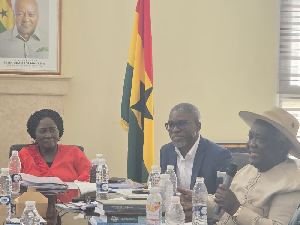In Sub-saharan Africa, cassava serves as a major staple for most people; in fact, it is the third largest carbohydrate source after rice and maize. Some of the more than 500 million cassava consumers in the region eat is as often as three times a day. It’s a dependable crop because cassava grows well in poor soils with little rainfall.
But two main diseases continue to damage the crop on the continent causing farmers huge losses. First, the Cassava Mosaic Disease (CMD) Virus. It causes stunting in the plants and eventually kills them. Annually, it is estimated it causes up to 30 percent cassava yield loss in mainly West and East Africa.
Then there is the Cassava Brown Streak Disease (CBSD) Virus which could be responsible for the loss of 100 percent yield on farms. This disease is currently the biggest cassava constraint in East Africa as it destroys the edible roots of the cassava even when rest of the plant looks healthy.
Since 2005, a global collaborative effort has been ongoing by researchers at the Donald Danforth Plant Science Center in USA, the National Crop Resources Research Institute in Uganda, the National Crop Research Institute in Nigeria, the Kenya Agricultural and Livestock Research Organisation, and a number of other partners to deal with these challenges.
The VIRCA Plus Project (Virus Resistant Cassava for Africa Project) is the result of a merger of two separate projects; first the VIRCA project which was aimed at making the cassava resistant to the two diseases, and the Bio Cassava Plus Project which was aimed at improving upon the nutritional value of the cassava.
I had a rare opportunity to visit the Donald Danforth Plant Sciences Center at St. Louis, Missouri in the USA to meet some of the scientists working on the project. I discovered that the work on the cassava has thrown up the complicated nature of science. There are a number of cassava varieties in East Africa that have a natural resistance to the Cassava Mosaic Disease (CMD) Virus.
The VIRCA Plus project used modern biotechnology processes to introduce the genes responsible for resistance to the Cassava Brown Streak Disease (CBSD) into the ones with natural resistance to CMD. The result; the natural cassava mosaic disease resistance was lost.
“VIRCA took varieties with natural CMD resistance….then they went on to add transgenic CBSD resistance….the process of tissue culture caused them to lose resistance to CMD…but transgenic CBSD resistance remained,” Dr Andrew Kiggundu who is Project Manager of the Institute for International Crop Improvement at the centre explained.
Dr Kiggundu attributes the situation to inexplicable circumstances that obviously shows how complicated science can be. But he says work is ongoing to correct that and re-introduce the lost resistance into the variety so it could have both.
“The mission is to provide both resistance…so they are doing field work to cross back the CMD resistance…now there are about 300 lines which are transgenic and have both CMD and CSBD…and are crossing it back to non-transgenic which is CMD resistant…now they have the first generation,” he explained.
“We are sure that once we get CBSD resistance in there, it will help millions because cassava is a food security crop people. Cassava production will be sustained,” Dr Kiggundu added.
The Donald Danforth Plant Center is also working with its partners under the same project to enhance the nutritional value of cassava. Although cassava provides a lot of calories, it does not contain sufficient levels of key nutrients. Some 75 percent of preschool children and 67% of pregnant women in Nigeria are affected by iron deficiency anaemia and 24 percent of people in sub-Saharan Africa are at risk of zinc deficiency due to an inadequate dietary intake.
Deficiency in vitamin A which is also known to be responsible for night blindness as well as increased risk of infection in children and maternal mortality in women are big issues in Africa as well. The project was working on introducing these three nutrients into local cassava varieties in Nigeria. But it pulled breaks on introducing carotene which is a vitamin A precursor into the cassava, as a result of inexplicable complications.
“We were able to make golden cassava. We had orange roots. But as you put the beta-carotene in it and it goes up, the starch goes down in the roots. Unknown science, unknown biological phenomenon, and right now, we can’t fix it. It’s not like it was broken. This is an unknown biological phenomenon that has been there forever,” Director of the Institute for International Crop Improvement at the Donald Danforth Plant Science Center Dr Nigel Taylor explained.
“The farmers grow cassava for the starch and if the starch content goes down, they won’t plant it. So we have to drop that… But there is conventionally bred cassava varieties that have a higher content of beta-carotene? That is why we dropped it because we know we will not be able to deliver it to the farmer,” he explained. “We are focusing on getting it to the farmer… What we are doing, it has never been done before. And anytime you do this, you discover these things,” Dr Niger Taylor added.
These examples with the VIRCA project speak of the complexities of science. But clearly, it is the same science that is being used to unravel the complexities and overcome them.
Opinions of Friday, 2 March 2018
Columnist: Joseph Opoku-Gakpo

![Opoku Gakpo [right] interviewing Dr Kiggundu Opoku Gakpo [right] interviewing Dr Kiggundu](https://cdn.ghanaweb.com/imagelib/pics/908/90825084.295.jpg)













